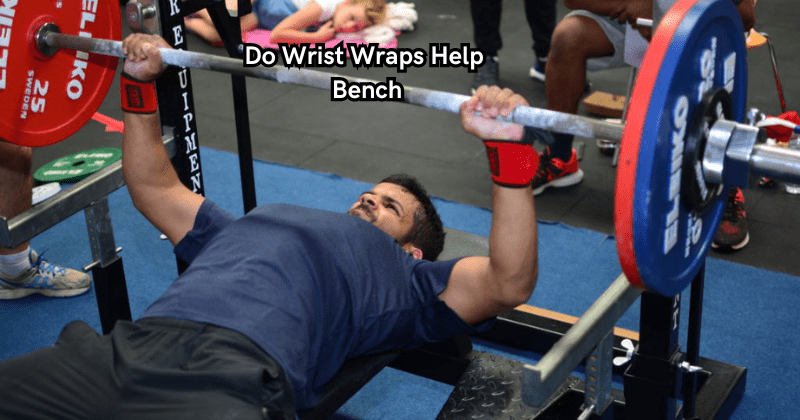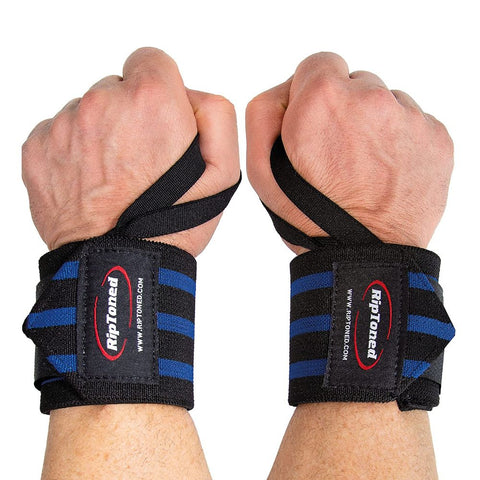
Do Wrist Wraps Help Bench
Share
Wrist wraps are commonly used in the world of fitness, especially in weightlifting and powerlifting exercises. They are meant to provide support and stability to the wrists during heavy lifting, such as bench press. However, there has been some debate on whether wrist wraps help with improving bench press performance or if they are just a trendy accessory.
In this article, we will explore the benefits and drawbacks of using wrist wraps for bench press, as well as provide some tips on how to use them effectively. We will also discuss why proper form and technique are still key factors in achieving a strong bench press, regardless of the use of wrist wraps.
Benefits of Wrist Wraps for Bench Press
The primary benefit of using wrist wraps for bench press is the support and stability they provide to the wrists. This is especially helpful for those who have weaker wrists or previous injuries, as it can prevent excessive strain on this joint during heavy lifting. Wrist wraps also help to maintain proper form by keeping the wrists in a neutral position, which allows for more efficient transfer of force from the arm muscles to the barbell.
Moreover, wrist wraps can also help with grip strength. Securing the wrists allows for a tighter and more secure grip on the barbell, which can ultimately lead to increased weightlifting performance. Additionally, some wrist wraps have added padding or cushioning that help reduce discomfort and pressure on the wrists during bench press.
Plus, wrist wraps can provide a psychological benefit for lifters. The physical reminder of having the wraps on may give them an added sense of confidence and help them mentally prepare for heavy lifting.
However, it is important to note that the benefits of wrist wraps are not universal and may vary from person to person. Some lifters may find little difference in their bench press performance when using wrist wraps.
Drawbacks of Wrist Wraps for Bench Press
One major drawback of using wrist wraps for bench press is over-reliance on them. If used excessively or improperly, they can actually hinder strength and muscle development in the wrists and forearms. This is because relying too heavily on wrist wraps may prevent these muscles from being fully engaged and strengthened during lifting.
Furthermore, improper use of wrist wraps can also lead to poor form. While they can help maintain proper wrist positioning, if used incorrectly or excessively tight, they can cause the lifter's wrists to bend back too far and put unnecessary strain on the joints.
Another potential drawback is a false sense of strength. Due to the added support and stability, lifters may feel that they can handle heavier weights than they actually can. This can lead to injury if proper caution and technique are not followed.
Do Wrist Wraps Help Bench Press?
The answer to this question is not a simple yes or no. Wrist wraps can provide support and stability for the wrists during bench press, which can ultimately lead to improved performance in some lifters. However, there are also potential drawbacks, and it is important to use them properly and in moderation.
In addition to using wrist wraps, proper form and technique should always be the main focus when trying to improve bench press performance. This includes proper hand and wrist positioning, as well as engaging the necessary muscles throughout the lift.
It is also important to remember that wrist wraps are just one tool in a lifter's arsenal and should not be relied upon too heavily. Incorporating various exercises and techniques into training can help strengthen the wrists and ultimately lead to improved bench press performance.
Plus, it is important to consult with a professional trainer or coach before using wrist wraps or any other fitness accessories. They can provide personalized advice and guidance on how to effectively incorporate them into your training routine.
Why Proper Form is Key
While wrist wraps can provide support and stability, they should not be used as a substitute for proper form and technique. Without the correct form, even with wrist wraps, you may still struggle to improve your bench press performance.
Proper form involves engaging all the necessary muscles, including the chest, shoulders, and triceps, to effectively lift the weight. It also includes having a stable and balanced body position, with the feet planted firmly on the ground.
Focusing on a proper form can also help prevent injuries. When lifting heavy weights, it is important to have control and stability throughout the movement to avoid strain or damage to muscles and joints.
Lastly, a proper form allows for efficient transfer of force from the muscles to the barbell, which is crucial for increasing weightlifting performance. It also helps to engage the targeted muscles more effectively, leading to better strength and muscle development.
Also, improving form can also have a positive impact on other exercises and lifts. By focusing on proper technique in bench press, it can help improve overall strength and form in other upper body exercises.
Does it Matter if You Use Wrist Wraps for Bench Press?
Ultimately, whether you use wrist wraps for bench press comes down to personal preference and individual needs. They can provide benefits in support, stability, and grip strength, but they are not necessary for everyone.
It is important to remember that proper form and technique should always be the top priority when trying to improve bench press performance. Wrist wraps can be a helpful tool, but they should not be relied upon too heavily. It is also important to use them properly and in moderation to avoid potential drawbacks or over-reliance on them.
Consult with a professional trainer or coach to determine if using wrist wraps is right for you and how to effectively incorporate them into your training routine. Remember, wrist wraps should never substitute for proper form and technique in bench presses or any other exercise.
How to Use Wrist Wraps for Bench Press
When using wrist wraps for bench press, it is important to first determine the correct tightness. They should be snug enough to provide support and stability but not so tight that they restrict movement or cause discomfort.
To put on wrist wraps, start with the thumb loop around your thumb and wrap the fabric around your wrist. Cover the entire wrist joint and hand, leaving about 1-2 inches of fabric between each wrap. The wraps should be tight but not cutting off circulation.
During bench press, remember to keep your wrists in a neutral position, with the wraps providing support and preventing them from bending back too far. Focus on engaging all necessary muscles and maintaining proper form throughout the lift.
It is also important to take breaks from using wrist wraps and work on grip strength and overall wrist stability. This can help prevent over-reliance on them and maintain balanced muscle development in the wrists and forearms.
Ultimately, proper use of wrist wraps for bench press involves finding the right balance between support and reliance, while prioritizing proper form and technique. Consulting with a professional trainer or coach can help ensure you are using wrist wraps effectively and safely in your training routine.
Tips for Improving Bench Press Performance
Aside from using wrist wraps and focusing on proper form, there are other ways to improve bench press performance. These tips include incorporating different variations of bench press, such as incline or decline bench, to target different muscles.
It is also important to vary the repetition range and weight used during training to stimulate muscle growth and prevent plateauing. Additionally, incorporating accessory exercises that target the chest, shoulders, and triceps can also help improve overall strength for bench press.
Proper nutrition and recovery are also key factors in improving performance. A balanced diet with enough protein can aid in muscle growth and repair. Getting enough rest and recovery time is also important to allow muscles to heal and grow stronger.
Remember to listen to your body and not push too hard, as overtraining can lead to injury and hinder progress. It is also beneficial to track progress and set realistic goals for yourself to continually challenge and improve your bench press performance.
Lastly, consistency is key. Consistently incorporating wrist wraps, proper form, and various techniques into training can lead to steady improvements in bench press performance over time.
FAQs
How do wrist wraps support proper wrist position during bench press?
Wrist wraps are designed to provide support and stability to the wrist joint by limiting excessive wrist extension and ensuring the wrist remains in a neutral, aligned position with the forearm. This proper wrist position is crucial during weight lifting, especially in exercises like the bench press, where there is a significant load being pressed. By preventing poor wrist position, wrist wraps can help enhance lifting technique and efficiency.
Can wearing wrist wraps help prevent wrist injuries during bench press?
Yes, wearing wrist wraps can play a significant role in preventing wrist injuries during bench press. By stabilizing the wrist joint and maintaining a neutral wrist position, they reduce the risk of strains, sprains, and other wrist injuries that can occur from the high stress and pressure of lifting heavy weights. This is particularly beneficial for lifters who have experienced wrist pain or wrist injury in the past.
Do wrist wraps increase the amount of weight you can bench press?
Wearing wrist wraps has been reported to potentially increase the weight one can bench press, with some lifters experiencing an increase of 2-8% more weight lifted. The added wrist support and stability provided by the wraps allow for a more efficient transfer of power from the upper body to the bar, helping to improve performance and possibly increase the maximum weight lifted.
When should I wear wrist wraps for bench pressing?
Wrist wraps should be considered when performing heavy bench press sets or if you experience wrist pain or discomfort during lifting. They are particularly useful for lifts that place significant pressure on the wrist joints, helping to ensure wrist safety and proper lifting form. However, it's also important to build natural wrist strength and stability, so consider using them primarily for your heaviest sets or when wrist discomfort becomes noticeable.
Conclusion
In conclusion, wrist wraps can be a helpful tool in bench press training, providing support and stability while lifting heavy weights. However, they should not be used as a substitute for proper form and technique. It is important to consult with a professional trainer or coach before using wrist wraps and to use them in moderation to avoid potential drawbacks.
Remember to focus on proper form, vary your training routine, and prioritize nutrition and recovery for optimal bench press performance. With consistency and dedication, you can continue to improve your bench press and overall strength. So keep pushing yourself, but always listen to your body and make adjustments as needed. Happy lifting!

Click Here to Learn More About the Rip Toned Wrist Wraps and add more weight to your bench press.
